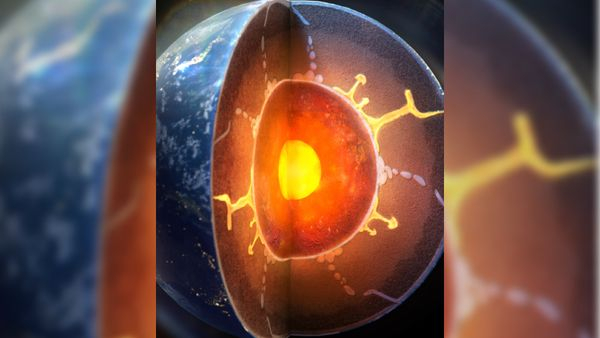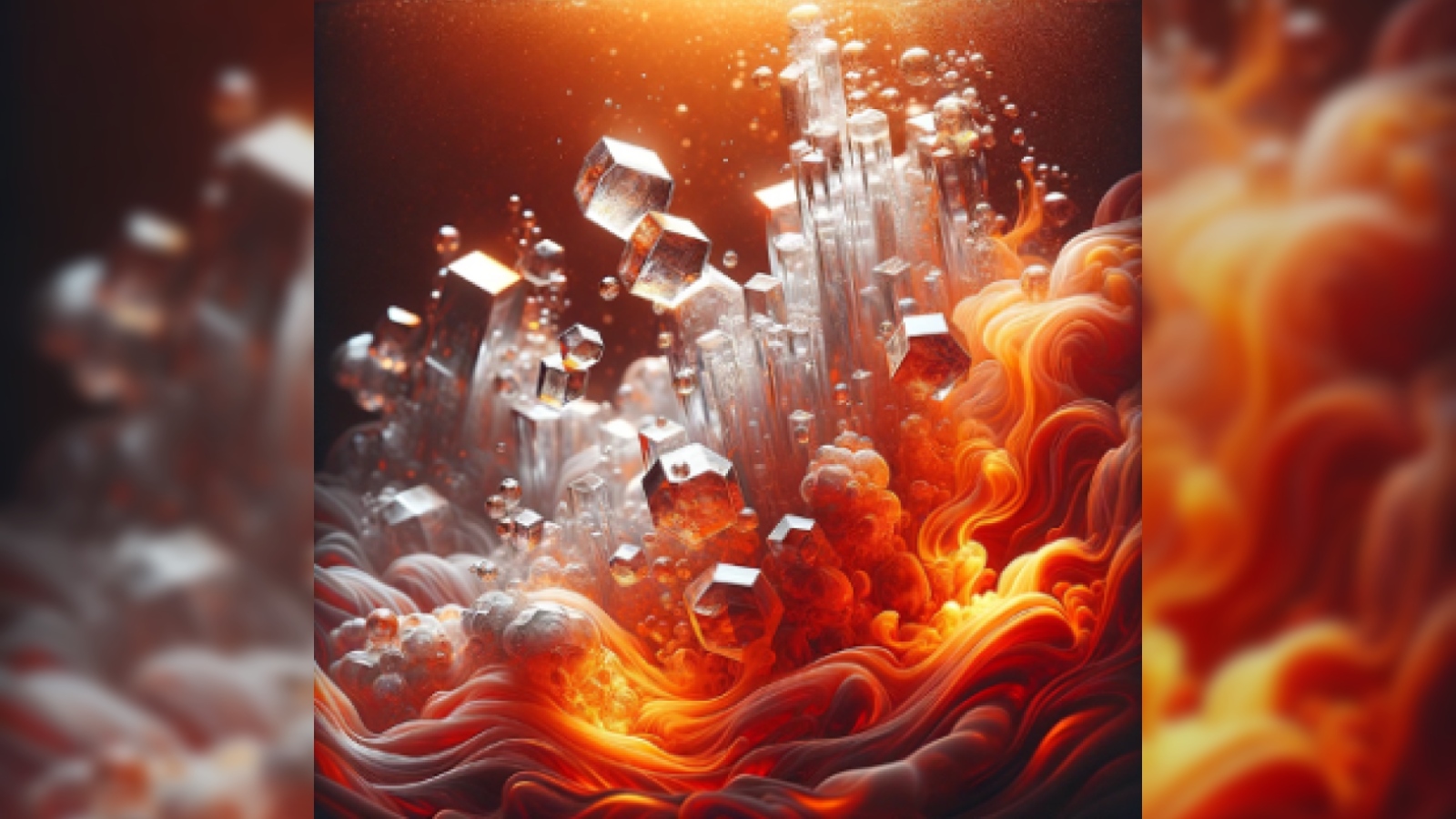Water leaking into Earth's core may have birthed a mysterious layer that churns out crystals
A new series of experiments has shown that the mysterious "E-prime layer," which surrounds Earth's outer core, is created by water that leaks deep into our planet's interior.

Scientists may have finally found the cause of a mysterious, crystal-forming layer that surrounds Earth's core — "leaking water" that trickles down from Earth's surface and reacts with our planet's metallic heart.
In the 1990s, geologists discovered a thin layer surrounding Earth's outer core — a swirling ocean of liquid metal that surrounds the solid inner core. The layer, dubbed the E-prime layer, or E' layer, is more than 60 miles (100 kilometers) thick — relatively slim compared with other sections of Earth's interior — and sits around 1,800 miles (2,900 km) beneath Earth's surface.
Scientists previously theorized that the E' layer was left behind by ancient iron-rich magma. Other theories posited that it leaked out of the inner core or formed during Earth's collision with a protoplanet that birthed the moon and left chunks of the infant world inside Earth. But none of these ideas have been widely accepted.
In a new study, published Nov. 13 in the journal Nature Geoscience, researchers discovered that the E' layer was likely created by water that leaks down from Earth's surface via subducting, or sinking, tectonic plates, then reacts with the outer core's metallic surface.
If the new finding is correct, it means the E' layer has produced large quantities of silica crystals as a byproduct of this reaction, which have been fed into the mantle — the massive layer of magma that sits between the outer core and Earth's outer crust.
Related: Where did Earth get its water? It was sucked up from space, new theory says
In the study, researchers conducted a series of laboratory experiments to replicate how water could react with the outer core under intense pressure. This revealed that the hydrogen from the water replaces the silica within the liquid metal, which forces the silica out of the metal in the form of crystals. The E' layer is therefore likely a hydrogen-rich and silica-depleted layer of the outer core, which goes against previous assumptions about its composition.
Get the Space.com Newsletter
Breaking space news, the latest updates on rocket launches, skywatching events and more!
The researchers believe it probably took more than 1 billion years for the E' layer to reach its current thickness, meaning it could be older than the inner core, which solidified around 1 billion years ago.
The new finding is another sign that our current understanding of how the outer core and mantle interact with one another may be incomplete.

In September 2022, the same research team discovered that leaking water could be reacting with large reservoirs of carbon in the outer core to create gigantic diamond factories near the core-mantle boundary.
"For years, it has been believed that material exchange between Earth's core and mantle is small," study co-author Dan Shim, a geoscientist at Arizona State University, said in a statement. But these discoveries "point to a far more dynamic core-mantle interaction, suggesting substantial material exchange."
Join our Space Forums to keep talking space on the latest missions, night sky and more! And if you have a news tip, correction or comment, let us know at: community@space.com.

Harry is a U.K.-based staff writer at Live Science. He studied Marine Biology at the University of Exeter (Penryn campus) and after graduating started his own blog site "Marine Madness," which he continues to run with other ocean enthusiasts. He is also interested in evolution, climate change, robots, space exploration, environmental conservation and anything that's been fossilized. When not at work he can be found watching sci-fi films, playing old Pokemon games or running (probably slower than he'd like).











